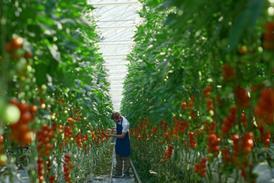Californian produce trader John Pandol reacts to Donald Trump’s plan to impose tariffs on Canadian and Mexican imports

The agricultural press is certainly abuzz with talk about the impact of another Trump presidency. We remember his first administration, and how it used free market access to the US as negotiating leverage.
Indeed, restricting access to US markets, technologies, dollars, the banking system, and capital markets was a preferred method of achieving its policy goals.
The basic premise: abandon 70 years of multilateral trade and standards treaties, diminish the role of international NGOs (UN, WTO) in favour of bilateral agreements, and this will result in more favourable outcomes for the US.
For the fresh produce trade, the fallout is dire. Agricultural trade is cannon fodder in the trade wars.
Tariffs usually lead to reprisals, and one cannot predict which products these affect, at what rate, and how long the tariff is in place.
In the US, much of our business with Canada is forward-priced programmes. So what happens when a large and unexpected extra cost is added?
I have to reduce my price, the grocer has to reduce their margins, and the consumer pays more – and likely buys less. As a trader, we face the same risk in the US with imported product.
Everybody loses.
Lost forever
The idea should be to get more budget-conscious, unhealthy folks to eat more fresh produce, not less. If the additional tariff or non-tariff barriers stay in place long enough, consumers will find a substitute good or a substitute origin.
As and when the barriers are removed, our customer is now someone else’s customer. The business is lost forever. The US soy business, for example, has permanently lost its share to Brazil.
Produce sold in the US is about 50:50 domestic to foreign; Canada is more foreign, Mexico more domestic. But international sourcing plays an important part in the supply chains of all three countries.
US agriculture has invested in production and processing capacity to service these trading partners, because they have been reliable markets.
If we lose or reduce export markets, what do we do with that sudden surplus capacity?
The last Trump administration helped out for lost markets, but that is not a long-term solution. The federal budget deficit shows that. Trade Not Aid is the battle cry.
There is also concern about increased input costs as a result of new duties. Most of the base ingredients for agrichemicals, veterinary pharmaceuticals, and human pharmaceuticals come from the Far East.
To give you another example, a tariff slapped on Canadian lumber during Trump’s first administration caused an increase in the price of pallets. And six years later, that extra cost is still here.






